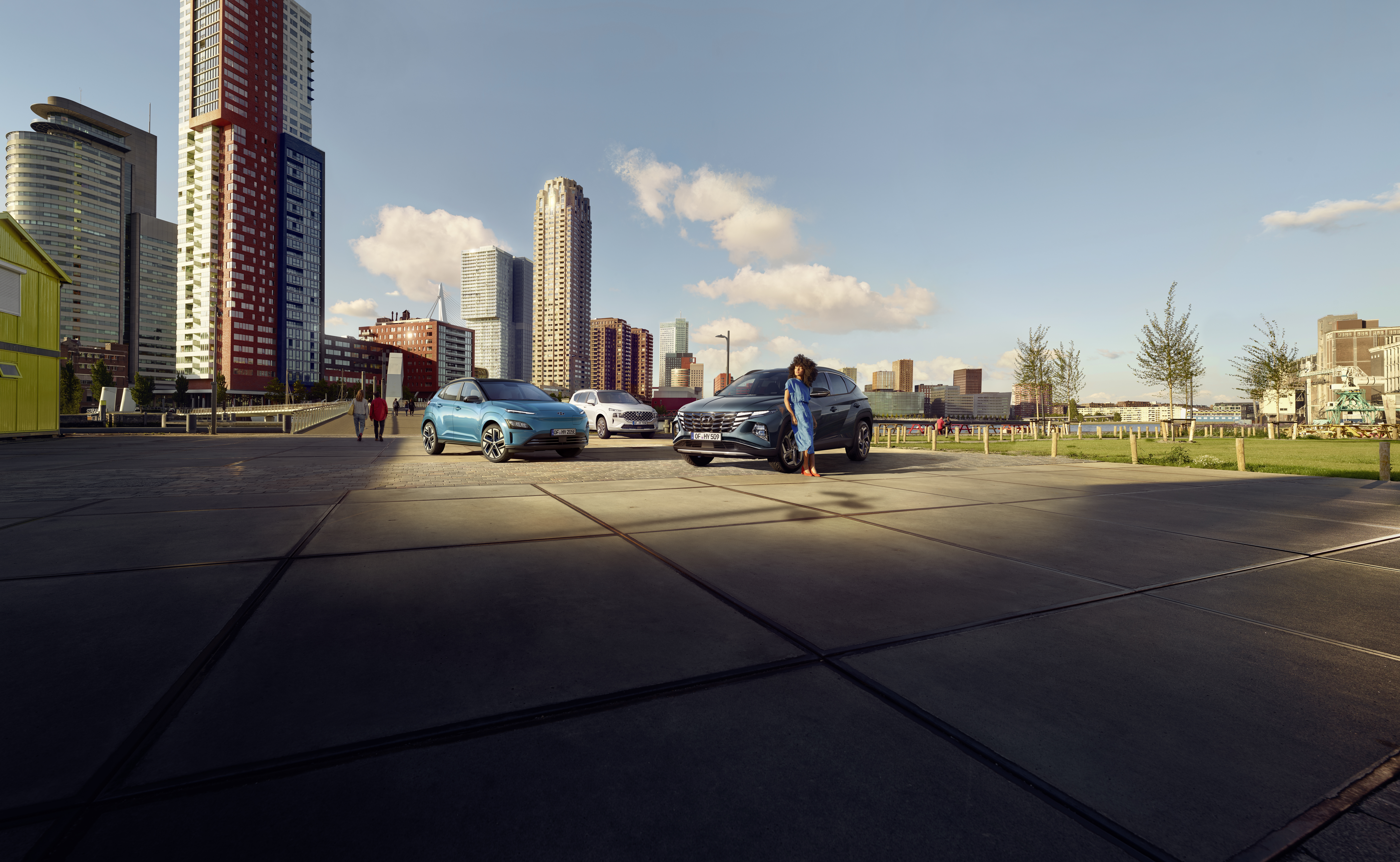New mobility & future technology.
Shaping the future of mobility through technology.
The future mobility technologies currently in development by Hyundai will allow people to pursue an innovative lifestyle and change the way we commute. We aim to create an ecosystem that connects all types of mobility – on the ground and in the air.
Smart mobility solution provider.
To propel this transformation, Hyundai has invested substantially in the development of groundbreaking new technologies such as autonomous driving, artificial intelligence (AI), Urban Air Mobility (UAM), smart factories, and robotics.
Human-Centered
Future cities that move us.
Our vision for a connected, mobile city of the future, involves three mobility solutions: Urban Air Mobility (UAM), Purpose Built Vehicles (PBV) and the Hub, which provides a crucial transfer link between these services, along with space for leisure and relaxation. UAM provides longer distance air travel across the city linking from one hub to another. At the Hub, passengers can transfer to a PBV, which provides ground level transport between destinations.

UAM
Urban air mobility.
Recent trends toward urbanisation have placed strain on local transportation infrastructure, reducing efficiency, increasing costs, and leading to more congestion. UAM takes mobility away from ground-level and enables runway-free urban air travel with Personal Air Vehicles (PAV) capable of electric vertical takeoff and landing.
Four pillars of UAM: safe, quiet, affordable, & passenger-centred.
- For safety, our Personal Air Vehicles (PAV) design has multiple rotors that provide multi-layer redundancy and ensure safe operation. For added security, a parachute deployment system will be installed for every passenger.
- PAVs will be designed with low noise levels, making them suitable for urban travel and offering comfort to passengers and pedestrians.
- UAM will be made affordable and accessible through Hyundai's automobile manufacturing know-how, and the use of light-weight carbon composite materials, while our aerodynamic design will reduce operating costs
- Lastly, the interior of UAM has been designed with passenger comfort at the centre, providing a connected, comfortable and enjoyable experience.
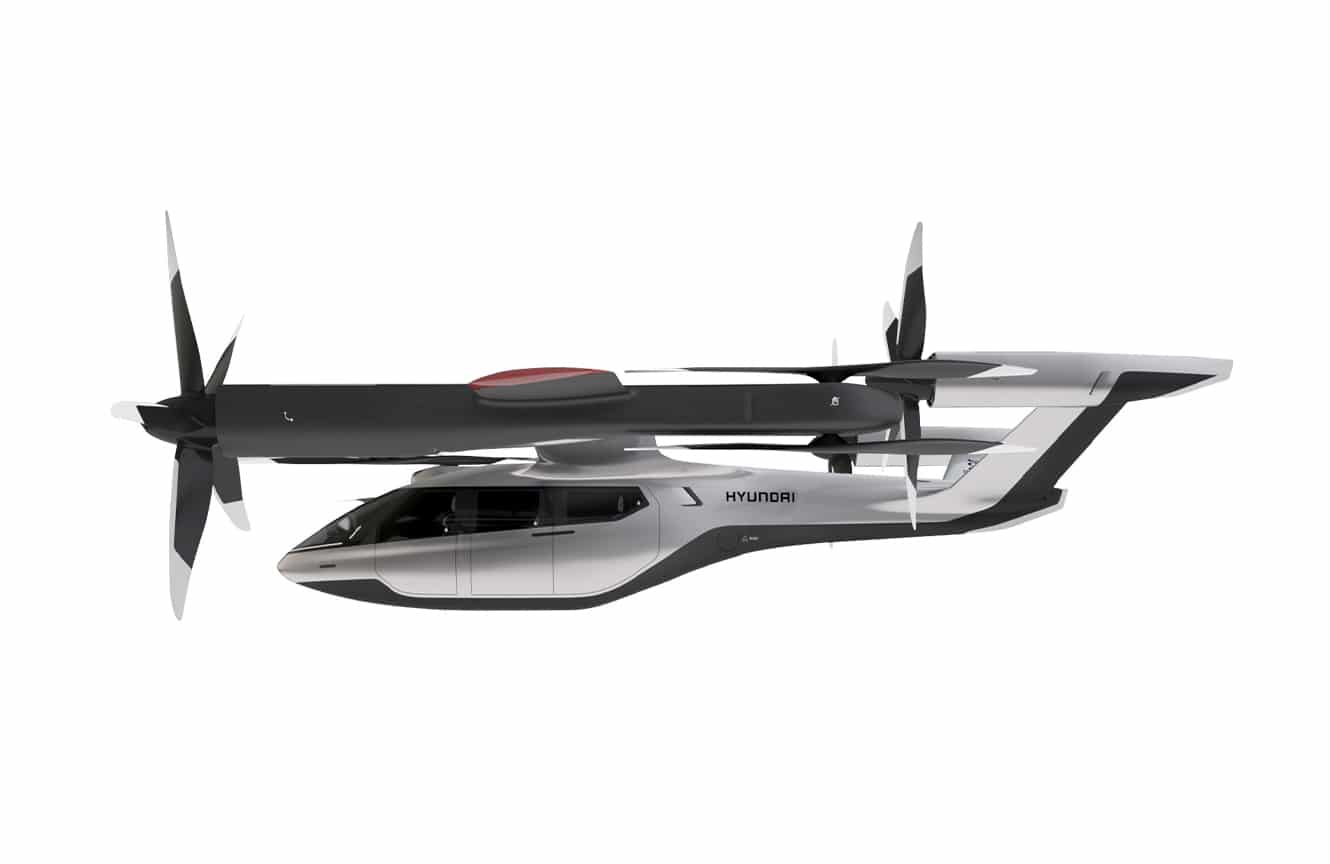
S-A1 concept.
S-A1 is designed to seat five people, including a pilot. It will be operated by a pilot during the early stages of commercialization and transition to autonomous operation once those technologies are developed.
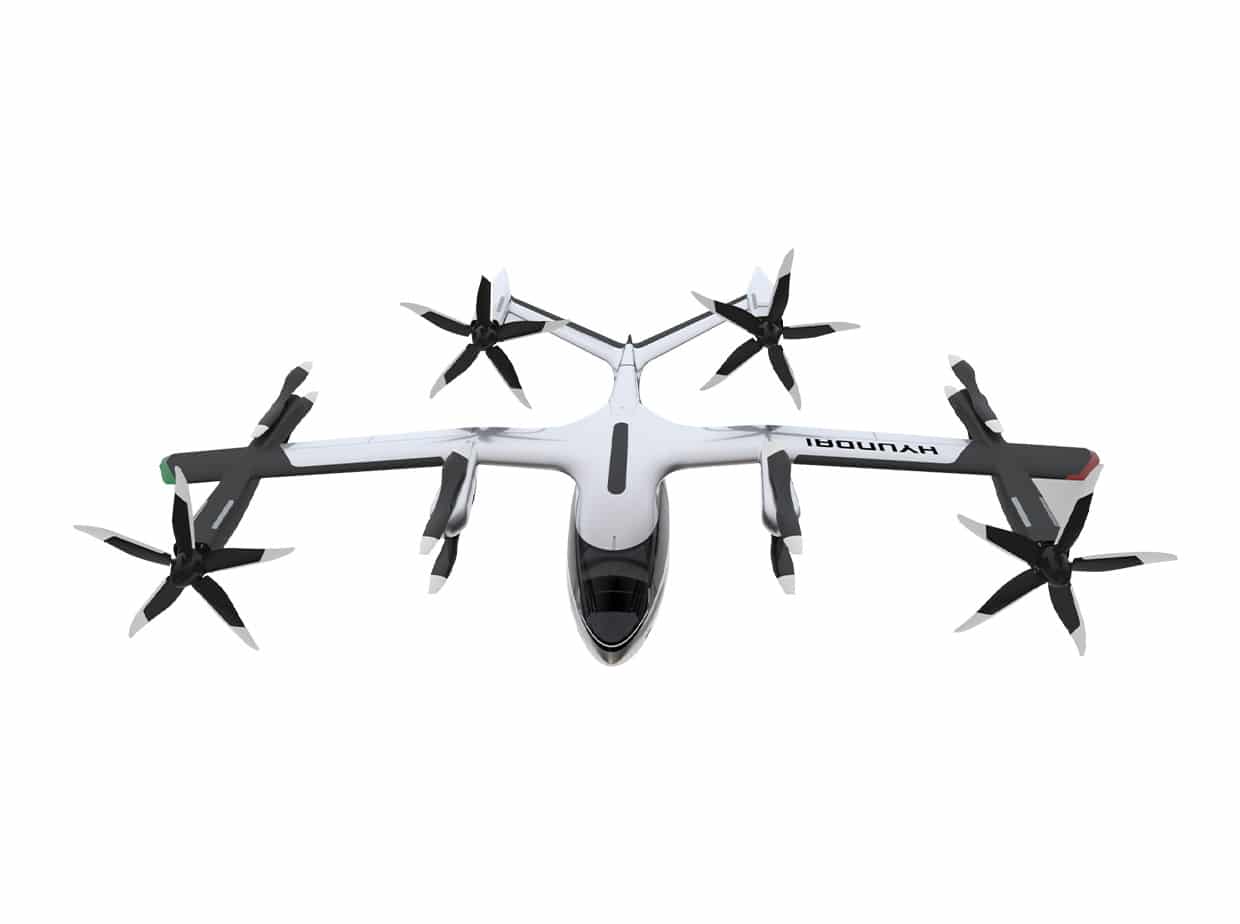
Specificatons.
With a total of eight rotors, the S-A1 has a 15-meter-long wingspan and a 10.7-meter-long body, enabling vertical take-off and landing without a runway. Five people, including a pilot, can fly distances of up to 100 km on electric power alone, with the battery recharging as passengers embark and disembark. It is designed for cruising speeds of up to 290 km/h.

Distributed electric propulsion.
Personal Air Vehicles operate with distributed electric propulsion, a system that independently drives multiple rotors. Even if one rotor fails, the vehicle is still able to fly safely. To minimise noise, these rotors are smaller than those of a helicopter, and are dynamically enabled/disabled based on flight conditions.

PBV
Purpose Built Vehicles for ground transportation.
While UAM flies freely in the skies over our cities, what will happen to vehicles on the ground? The answer lies in Purpose Built Vehicles (PBV), the eco-friendly, multipurpose mobility solution that uses autonomous driving to connect people to their final destination. They also connect to the Hub, which serves as a land-to-air intermodal transfer point.
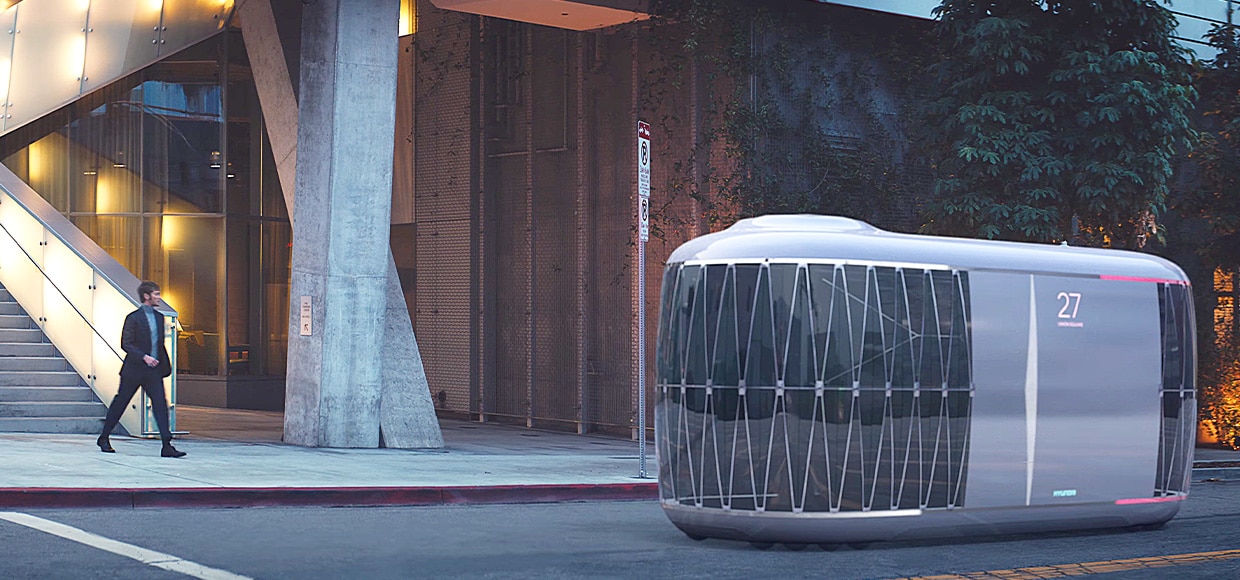
Adapted to modern lifestyles.
The PBV accommodates a wide spectrum of future lifestyles with limitless personalisation. It is built in the shape of a skateboard, with an adjustable size from 4 to 6 meters. The fully autonomous driving function will enable various uses ranging from personalized living space to public shuttle.
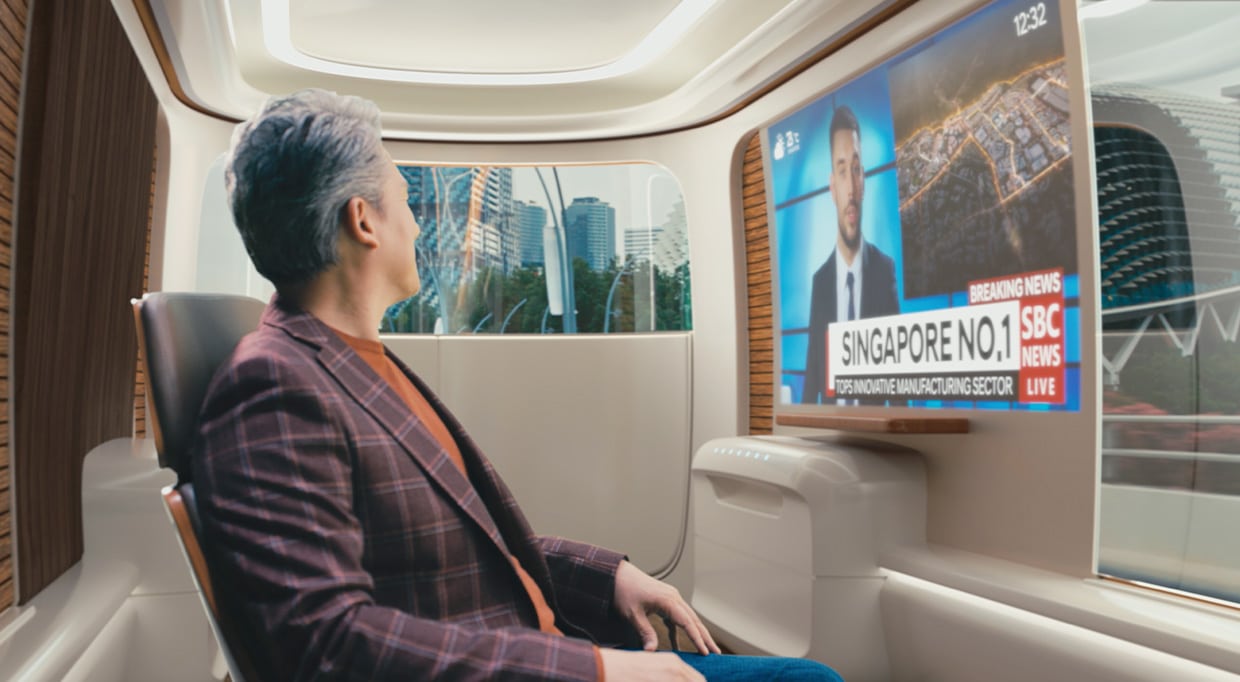
A variety of uses.
PBVs will have variable shapes and features based on their intended usage, which ranges from public transportation to clinics, cafes, living spaces and freight transfer, enabling contact-less logistics in the future.
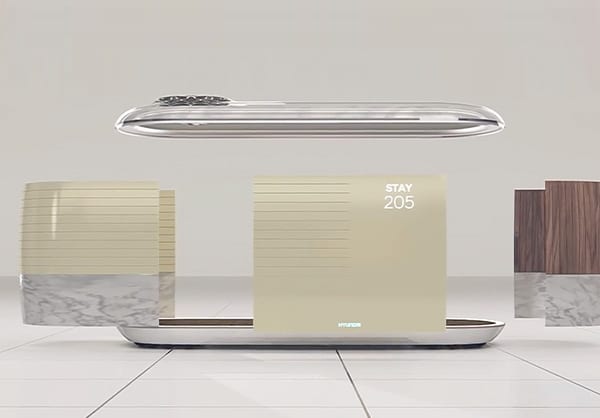
Modular design.
The construction of the PBV is modular and allows for a variety of customisation options. The upper- and under-bodies can be completely disassembled and the size is adjustable. The interior in particular can be fashioned based on individual preferences, creating a comfortable living space, rather than just a vehicle.

Ensuring passenger and pedestrian wellbeing.
PBVs’ platooning feature allows it to smoothly navigate along the best route. Platooning is a method where vehicles group together at an optimum distance and communicate with each other to adapt this grouping based on the current road situation. Platooning decreases traffic accident rates and is expected to bring innovative changes to personal deliveries, as well as supporting the wider logistics industry within future cities.

Solar-powered electric vehicles.
On the roof of the PBV are solar panels that charge the battery driving the electric motor. PBVs will also be able to charge while driving with the help of a dedicated charger vehicle.
HUB
A mobility space connecting UAM and PBV.
The Hub is a transfer space consisting of a skyport for Personal Air Vehicles (PAV) on the upper level and docking stations on ground-level for PBVs to approach and depart in multiple directions. Hubs can be transformed into an infinite number of new spaces depending on how PBVs are connected.

Culture hubs.
The Hub can be turned into a cultural complex by bringing together PBVs functioning as concert halls, movie theatres, and museums.
Medical hubs.
Another example of the Hub's flexibility is its use for the medical sector, linking medical service PBVs in the form of clinics, pharmacies and doctor’s offices to a single space.
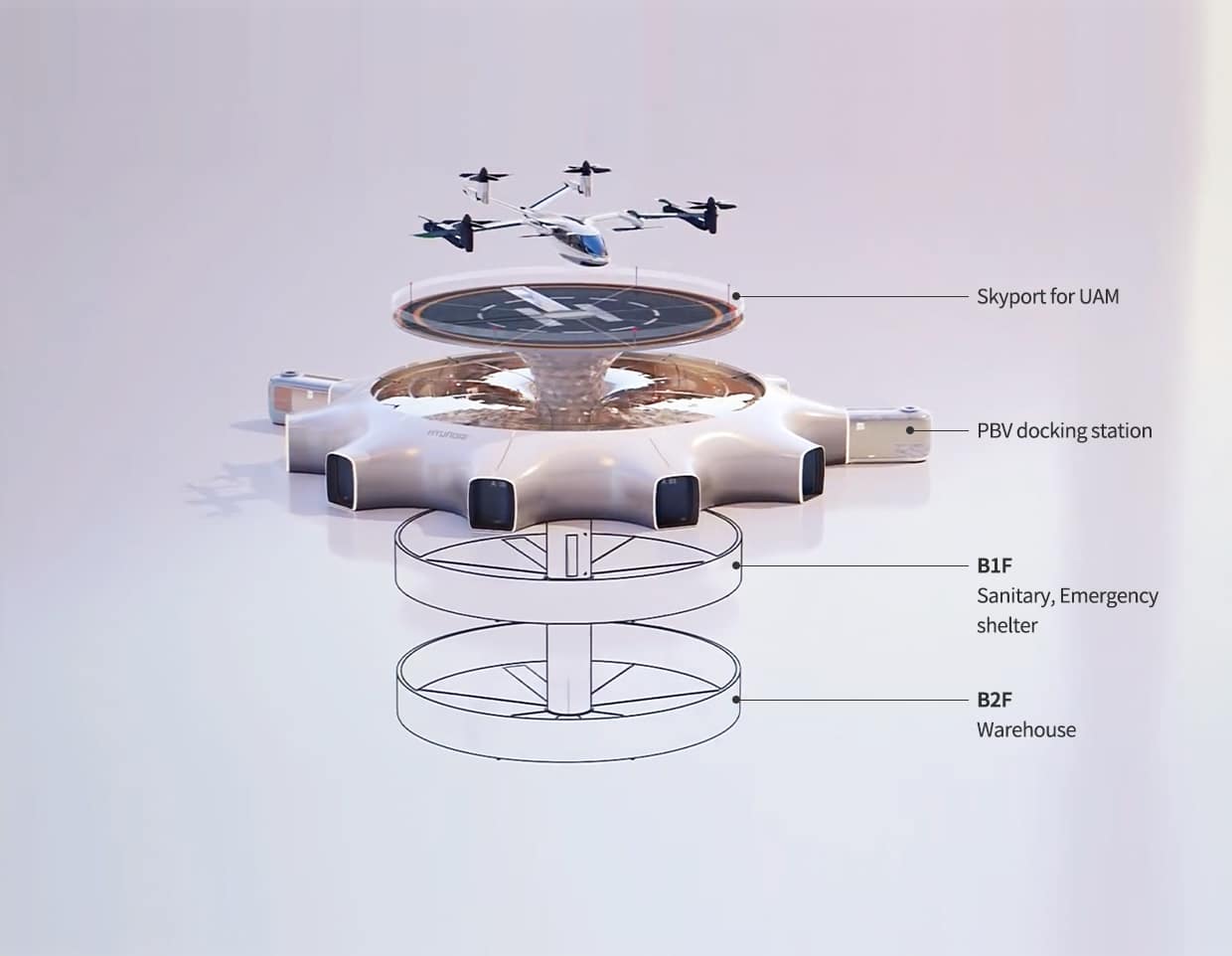
IONIQ 5 Robotaxi: next-generation driverless vehicle.
Hyundai and Motional, a global leader in driverless technology, have unveiled the IONIQ 5 robotaxi – a zero tailpipe-emissions SAE Level 4 autonomous vehicle. This driverless vehicle represents the convergence of the two most transformative technologies in mobility: electrification and autonomy. The fusion of these technologies can make transportation smarter, safer, and more sustainable.
IAA highlights


